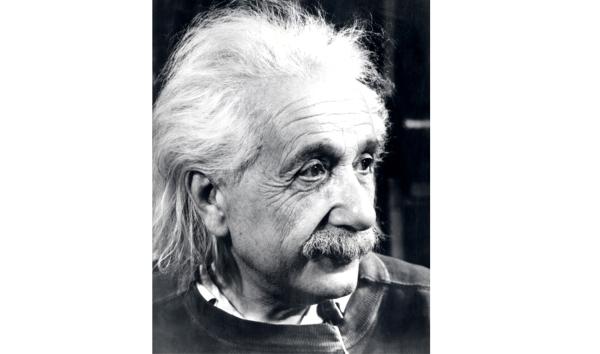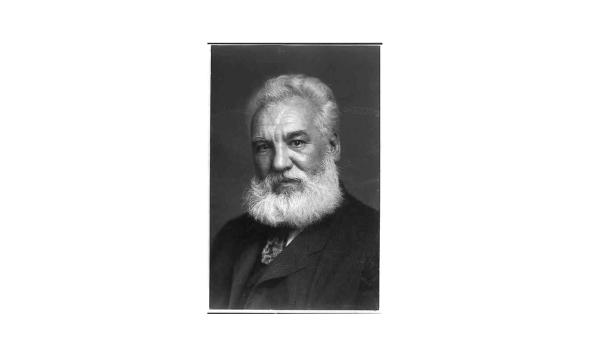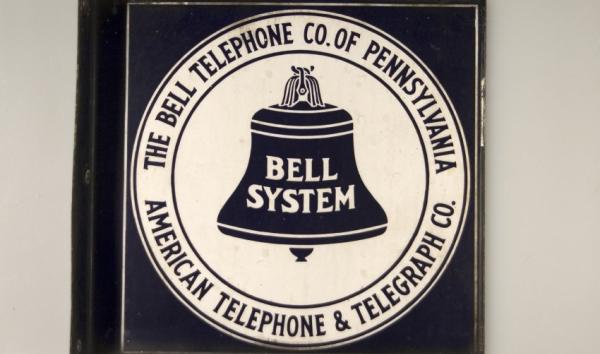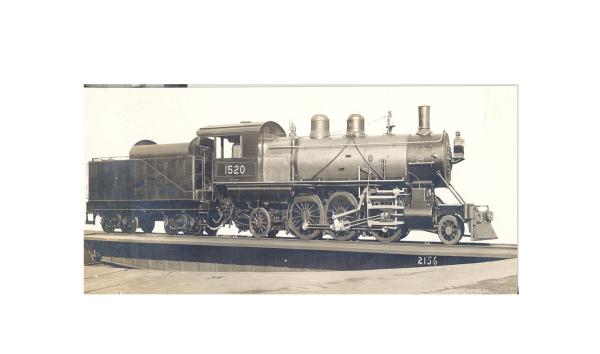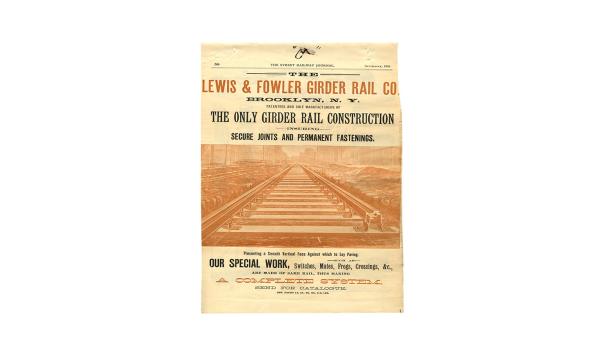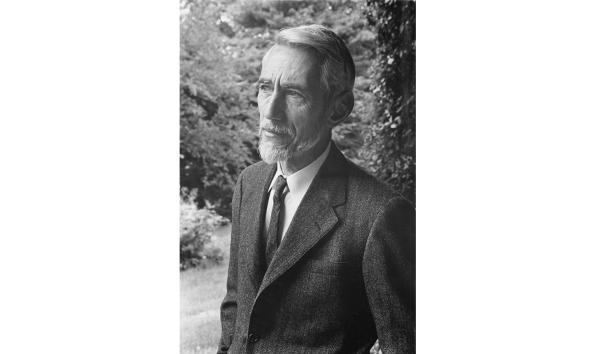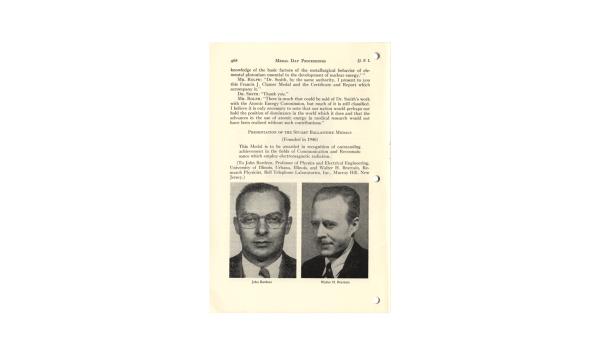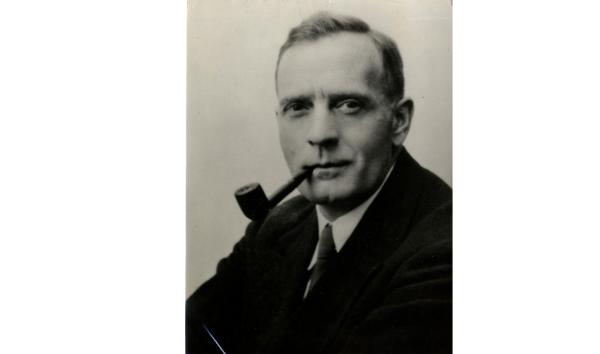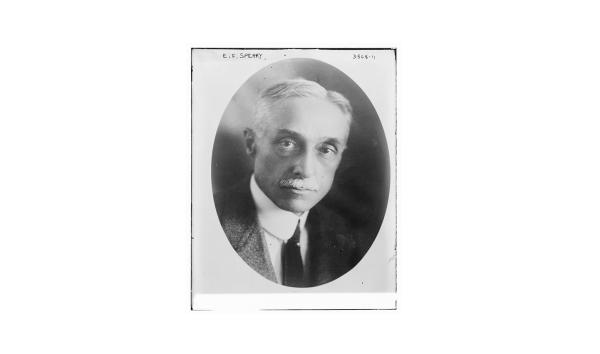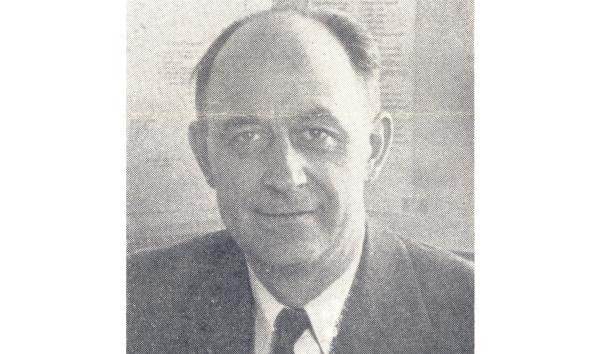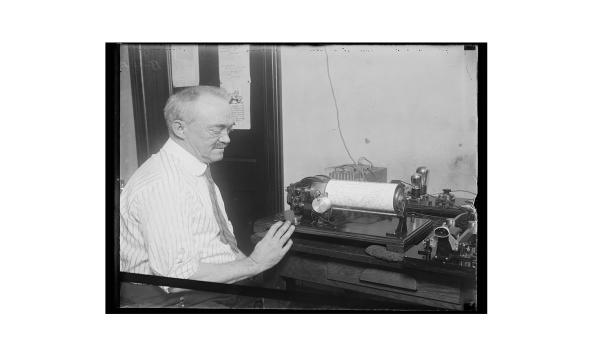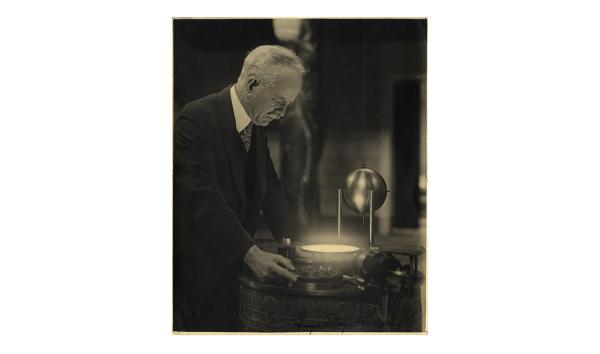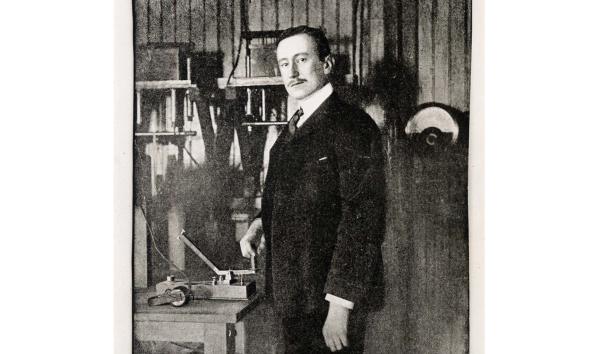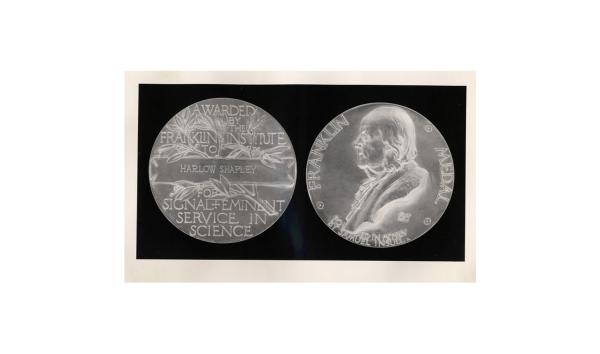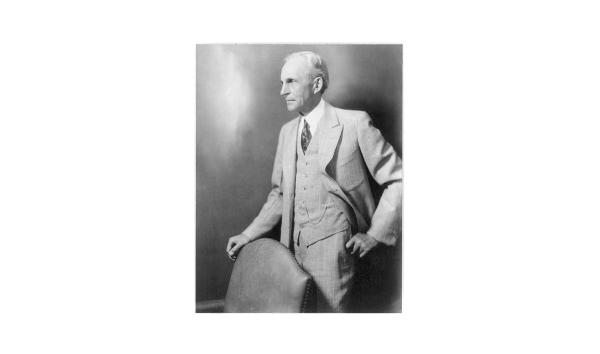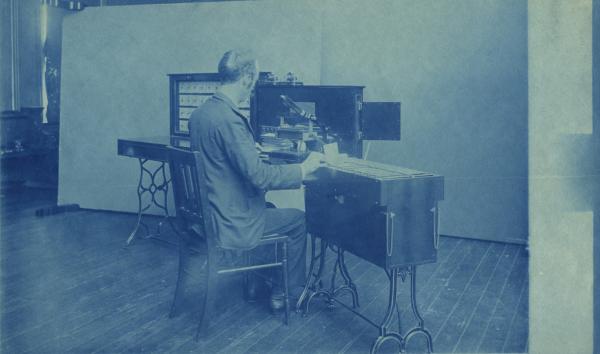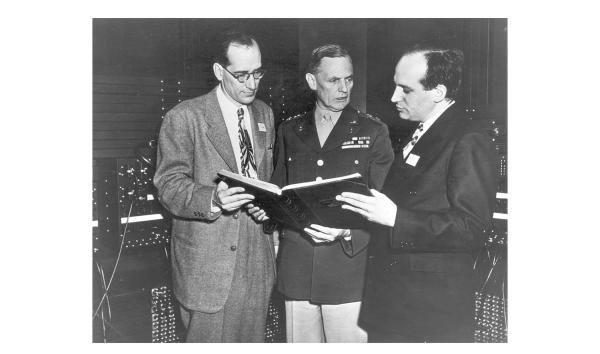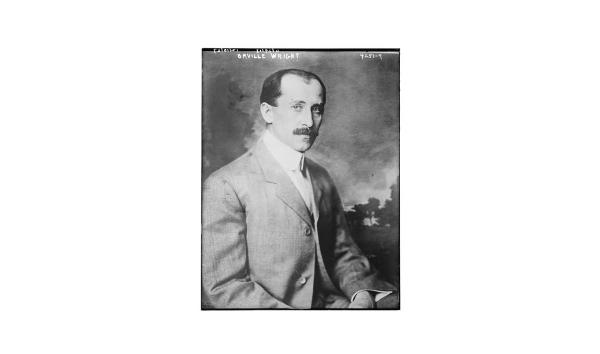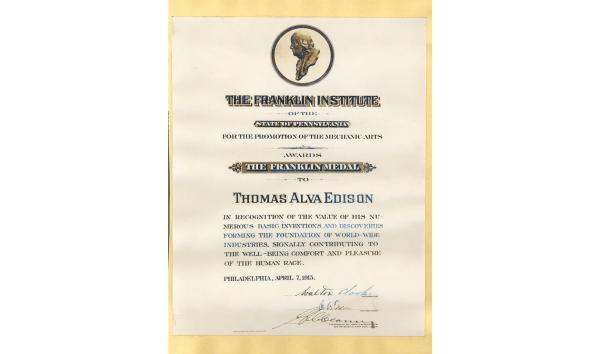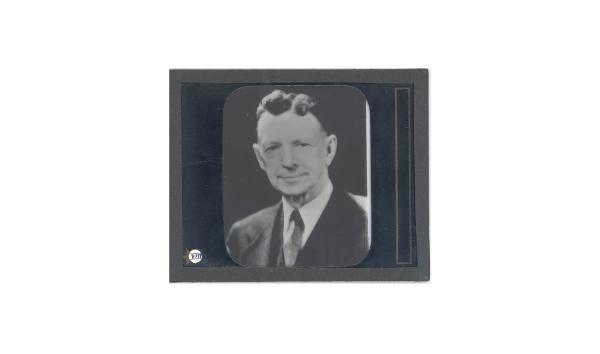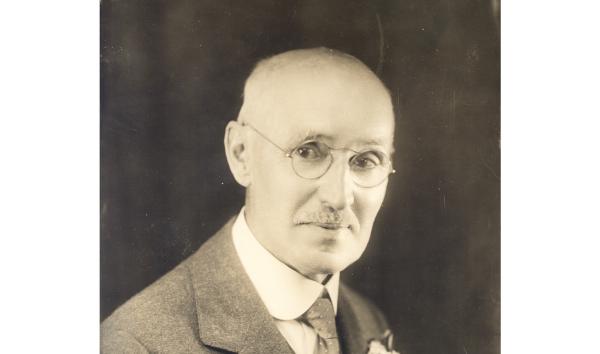The Case Files are a unique repository in the history of science and technology.
As the documentary record of The Franklin Institute Awards program, the Case Files are filled with stories of scientific enterprise.
The long, distinguished history of The Franklin Institute Awards Program dates back to 1824, when the Institute was founded by a group of leading Philadelphians to train artisans and mechanics in the fundamentals of science.
Albert Einstein
In 1935 Albert Einstein was awarded the Franklin Medal in recognition of his contributions to theoretical physics, especially his work on Relativity and the Photo-Electric effect.
Alexander Graham Bell
Alexander Graham Bell was awarded the Elliott Cresson Medal in the field of Engineering in 1912 for Electrical Transmission of Articulate Speech.
AT&T
The Franklin Institute awarded AT&T with The Franklin Medal and the Elliott Cresson Medal for their contribution in telephone service.
Baldwin Locomotive Works
Mattias Baldwin's mechanical tinkering led him to winning the Cresson Award from The Franklin Institute for designing and experimenting with locomotives.
Catherine L. Gibbon
Catherine L. Gibbon was awarded the John Scott Legacy Medal in 1892 for Improvement in Street Railway Track Construction.
Charles F. Kettering
Due to his contribution in the science of automotive engineering, Charles F. Kettering was awarded the 1936 Franklin Medal by The Franklin Institute.
Claude Elwood Shannon
The 1955 Stuart Ballantine Medal was awarded to Dr. Claude Elwood Shannon for his intelligence in statistical functions in the field of communications.
Dr. John Bardeen and Walter Brattain
Dr. John Bardeen and Walter Brattain received the Ballantine Award for their invention of the Point Contact Transistor.
Edwin Hubble
The 1939 Franklin Medal was one of many awards given to Edwin Hubble for his contribution to physics.
Elmer A. Sperry
he Franklin Institute recognized Elmer Sperry and his gyroscopic compass for its unique design and excellent function, awarding him the John Scott Legacy Medal.
Enrico Fermi
For his accomplishments in theoretical and experimental physics, Enrico Fermi received the Benjamin Franklin Award in Physics.
Francis Jenkins
Francis Jenkins was awarded the Elliott Cresson Medal in Invention by The Franklin Institute in 1897 for the Phantoscope projector.
George Ellery Hale
George Ellery Hale was honored throughout his life for his contributions in the development of astrophysics.
Guglielmo Marconi
In 1918, Guglielmo Marconi was awarded the Franklin Medal in Engineering for the application of radio waves to communication.
Harlow Shapley
Harlow Shapley's assessment of the Milky Way changed astronomy forever, awarding him The Franklin Medal in Physics in 1945.
Henry Ford
In 1907, Henry Ford vowed to make a motor car for the great multitude rather than a luxury item for the rich. He would accomplish this by bringing down the price and producing large quantities to achieve economies of scale.
Herman Hollerith
The 1890 Elliott Cresson Medal was awarded by The Franklin Institute to Herman Hollerith for his Electric Tabulating Device.
Igor Sikorsky
In 1929, the Sikorsky Aviation Company became a subsidiary of United Aircraft Corporation, granting Sikorsky fame and recognition.
John J. Carty
Carty made early contributions to large-scale switchboard technology and in describing and eliminating the phenomenon of cross talk.
John W. Mauchly and J. Presper Eckert
Though computers have undergone a myriad of changes since the ENIAC, the design outlined by Mauchly and Eckert remains the structure of computers today.
Marie Curie
Curie's first hypothesis that radiation originated in a sample of elemental uranium set the stage for discoveries on atomic structure.
Nikola Tesla
Tesla described his coil as a simpler device for the production of electric oscillations for use in the design of high frequency machines.
Orville Wright
Though he never finished high school, Orville Wright had successful business ventures in printing, bicycle repair, and aviation.
Robert A. Millikan
Millikan's accomplishments included the design and fine-tuning of experiments which confirmed the most important scientific theories of his time.
Thomas A. Edison
Nicknamed The Wizard of Menlo Park, Edison was not particularly wizardly. Rather, he was a savvy businessman who understood the value of iterative invention.
William Coolidge
William Coolidge received the 1927 Edison Medal for "contributions to the incandescent electric lighting and the X-rays art."
William Jennings
His personal and professional travels allowed him to photograph America; his collection of scrapbooks and photographs are an invaluable portrait of the 19th and early 20th century United States.
William S. Burroughs
Young Burroughs realized that when America was experiencing a rapid growth of industry, there was a need for a machine that could add numbers quickly.


